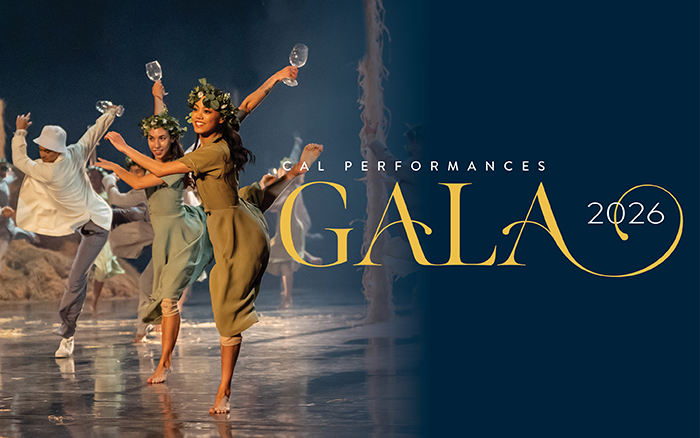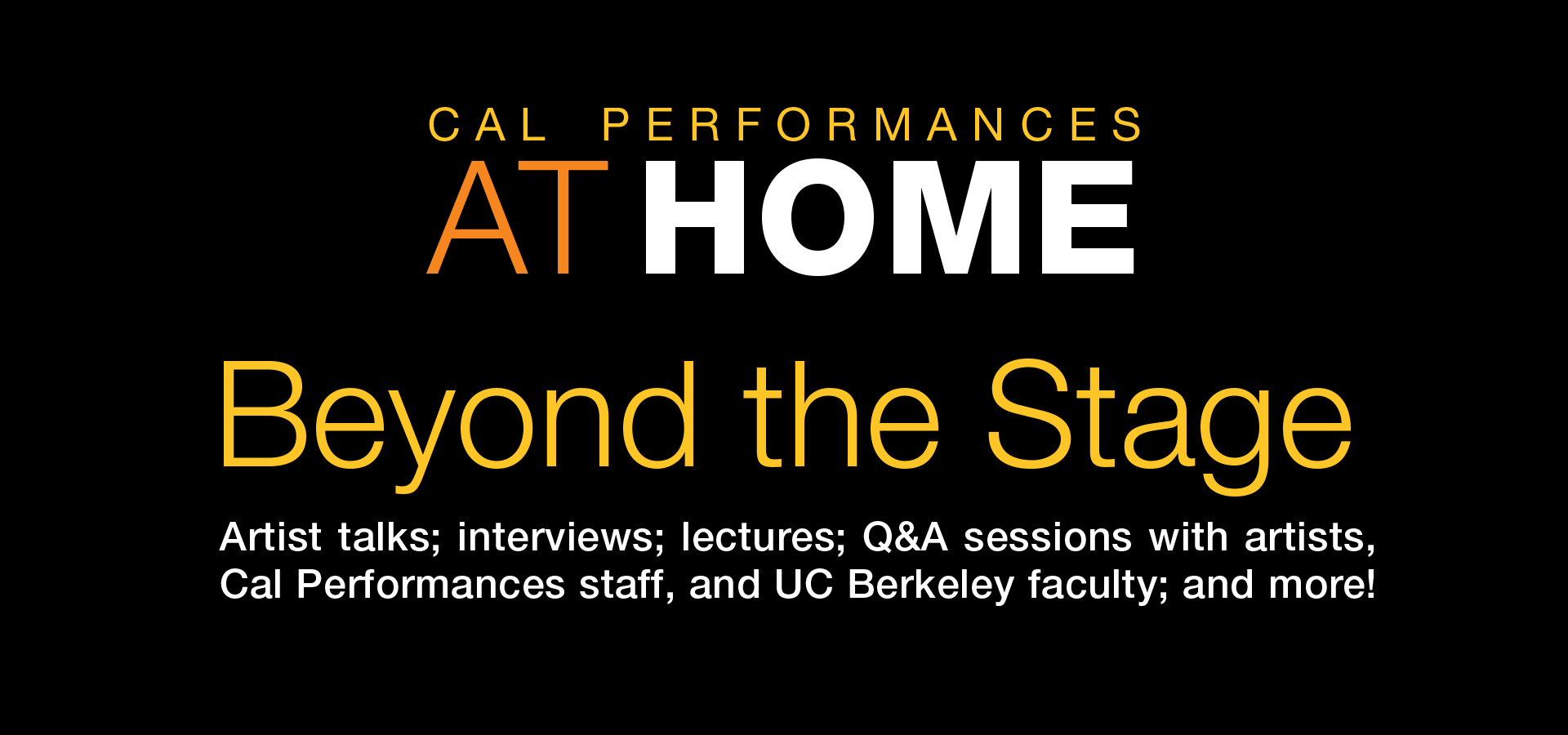
Cal Performances at Home is much more than a series of great streamed performances. Fascinating behind-the-scenes artist interviews. Informative and entertaining public forums. The Cal Performances Reading Room, featuring books with interesting connections to our Fall 2020 programs. For all this and much more, keep checking this page for frequent updates and to journey far, far Beyond the Stage!
Major support for Beyond the Stage is provided by Bank of America.
Beyond the Stage
What do the performing arts give to you?
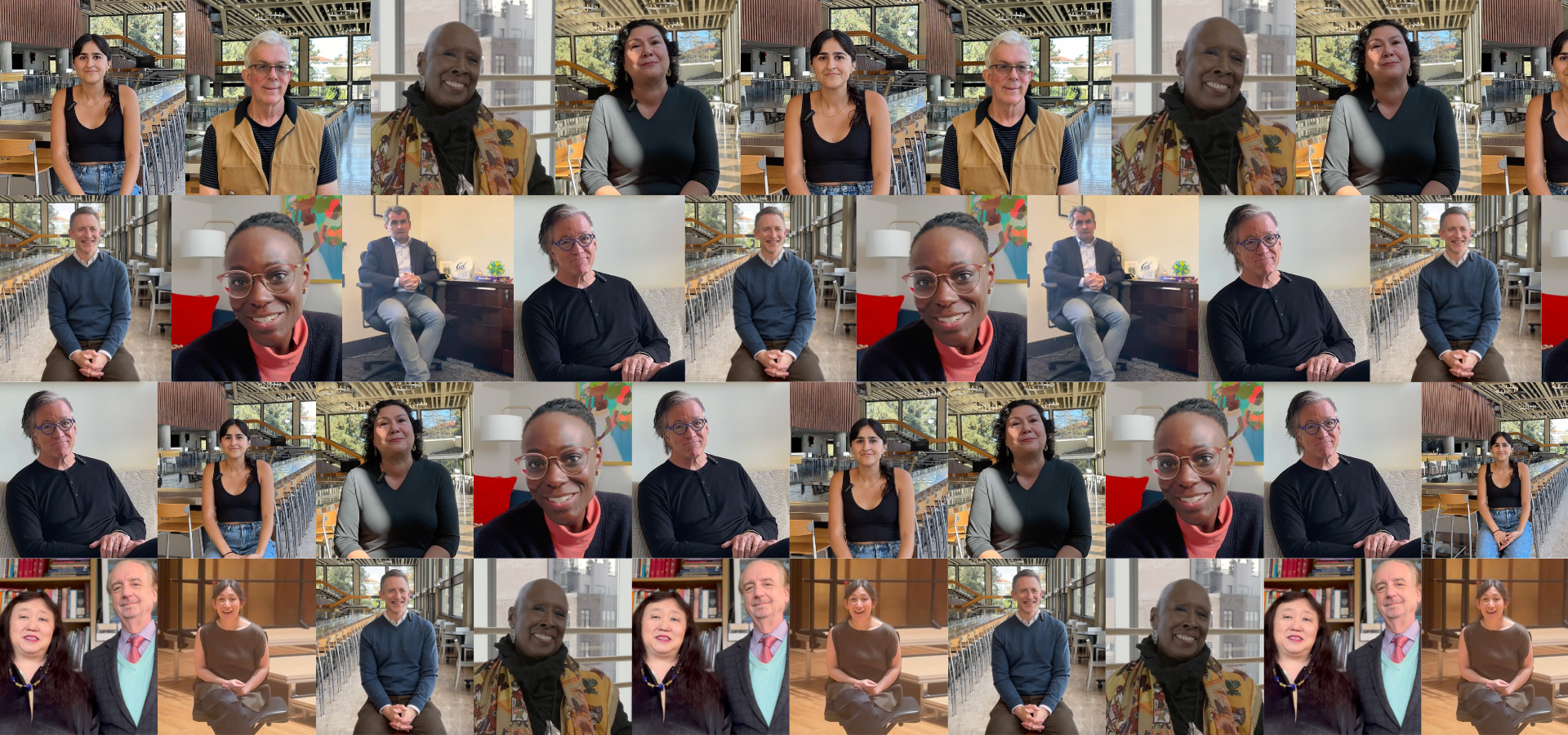
What do the performing arts give to you?
“I think there are as many answers to that as there are days of the year…”
Video by Tiffany Valvo, Cal Performances’ Social Media and Digital Content Specialist. Music bed by Brad Mehldau Trio.
As we enter into the season of giving, we wanted to take a look at those intangible gifts that the arts bring each of us—gifts that inspire us and shape us throughout our lives. Given that each person’s relationship with live performing arts is incredibly personal, we asked a number of artists, UC Berkeley students and staff, and patrons what the arts have given them. And, as we stitched together these wide-ranging answers, it became even more clear how essential the performing arts are to our lives: they help us understand the world, grapple with complex ideas, find joy when we least expect it, and so much more!
Watch the video to hear more about the performing arts’ impact on members of our community: Jeremy Geffen, Cal Performances Executive and Artistic Director; Kimia Adibi, UC Berkeley student and Cal Performances PR and Social Media Assistant; Nathalie Joachim, composer, performer, and flutist; Judith Jamison, choreographer and Alvin Ailey American Dance Theater Artistic Director Emerita; Tom Craft, Cal Performances Audio Department Head; Jeff MacKie-Mason, Cal Performances Board of Trustees Co-Chair and University Librarian, Chief Digital Scholarship Officer, and Professor at UC Berkeley; David Finckel, cellist and Co-Artistic Director of Chamber Music Society of Lincoln Center and Music@Menlo; Rica Anderson, Cal Performances Manager of Education & Community Programs; Oliver O’Reilly, Distinguished Professor of Mechanical Engineering and Vice Provost for Undergraduate Education at UC Berkeley; Wu Han, pianist and Co-Artistic Director of Chamber Music Society of Lincoln Center and Music@Menlo; and Harumi Rhodes, violinist for Takács Quartet.
Upcoming Related Events
Related Posts
There are no related posts yet. Check back soon!
Illuminations Artists and UC Berkeley Professors Discuss Intersectionalities
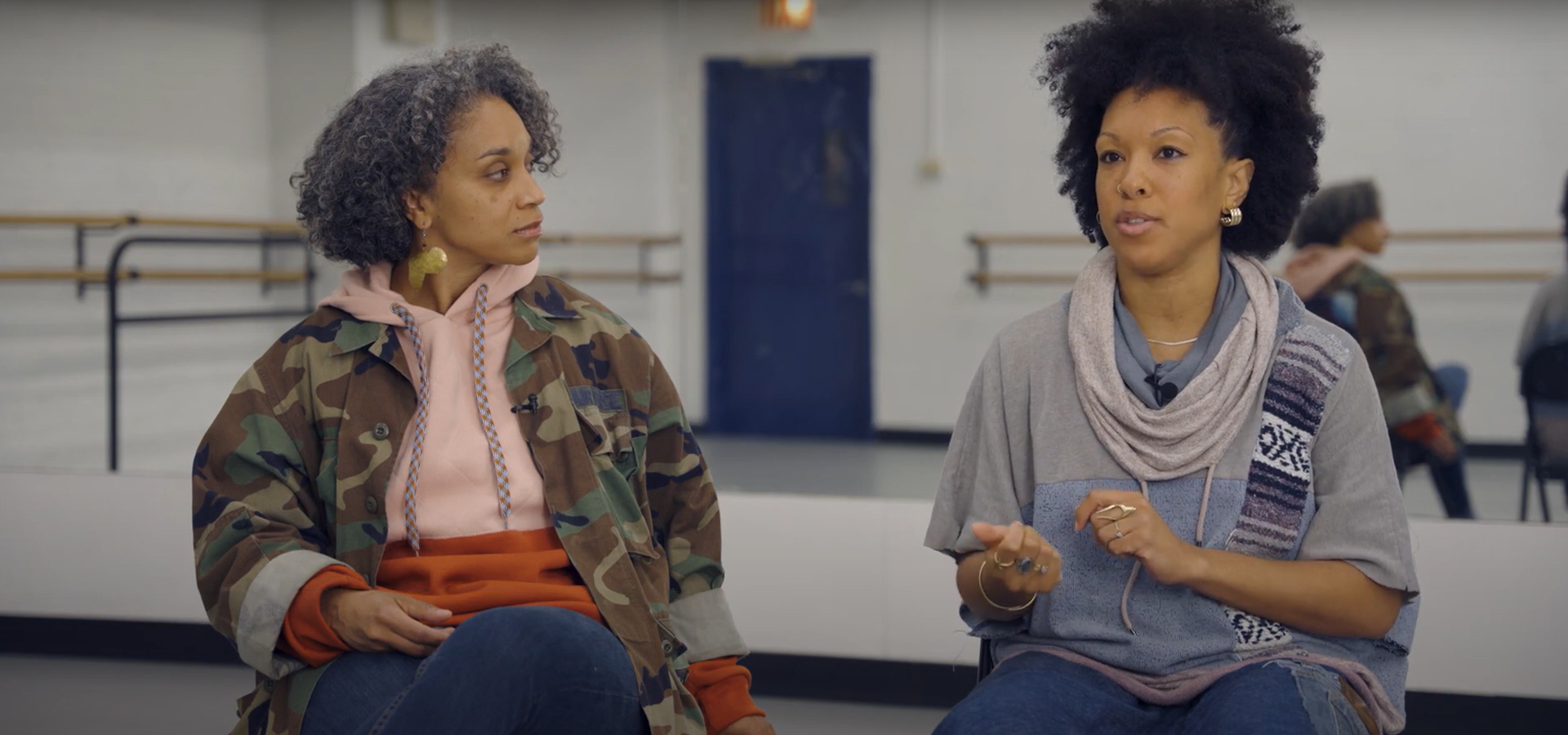
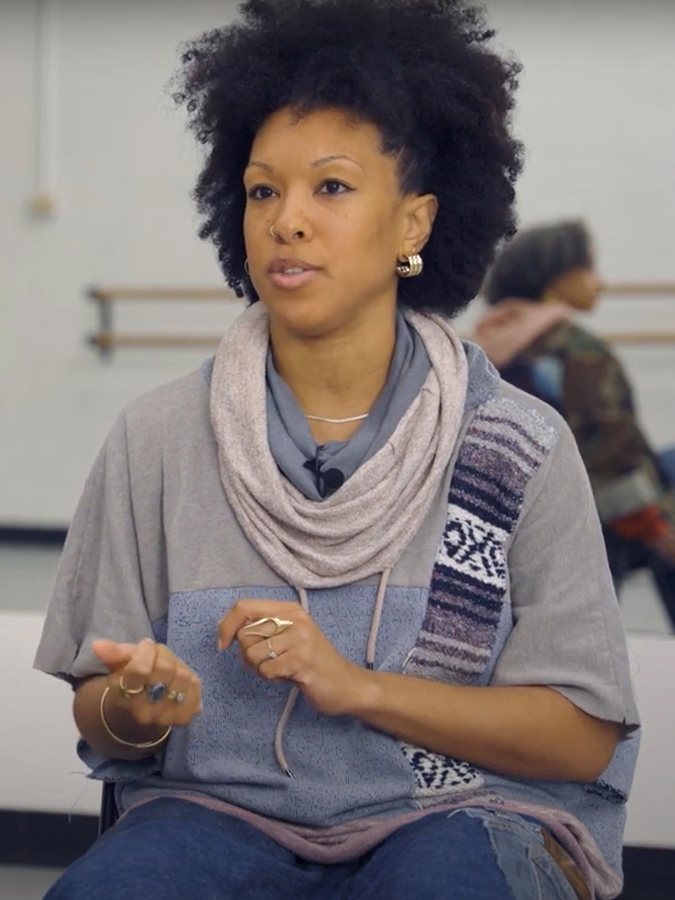
Illuminations Artists and UC Berkeley Professors Discuss Intersectionalities
Why is intersectionality important?
Produced and directed by Mina Girgis, Cal Performances’ Director of Education, Campus and Community Engagement; Directed and edited by Lindsay Gauthier. Full credits below.
In late summer/early fall, Cal Performances’ Director of Education, Campus and Community Engagement, Mina Girgis, sat down with artists from Taylor Mac & Matt Ray’s Bark of Millions, Wild Up, and Urban Bush Women; as well as noteworthy scholars from across the UC Berkeley campus, representing expertise in bioethics, ethnic studies, African American studies, and gender & women’s studies. To provide context to this season’s Illuminations theme of “Individual & Community,” they explored both the value and genesis of intersectionality as a framework for understanding how individuals’ social and political identities result in unique combinations of discrimination and privilege. In this video, UC Berkeley faculty explain the meaning of intersectionality and relate it to their own research, and Illuminations artists illustrate these concepts through their own experiences and those of the composers, choreographers, and creators whose work they will perform as part of Cal Performances’ Illuminations programming.
Topics include:
- 0:00 – Intro
- 1:54 – Why is intersectionality important?
- 2:10 – The need for “Intersectionality”
- 7:10 – Identity & Ideas
- 9:00 – Inclusion
- 13:48 – Transformation
This video features Jodi Halpern, MD, PhD, Chancellor’s Chair and professor of bioethics; Juana María Rodríguez, PhD, professor of ethnic studies; Taylor Mac, writer and co-director of Bark of Millions; Leigh Raiford, PhD, professor of African American studies; Patrice Douglass, PhD, assistant professor of gender & women’s studies; Christopher Rountree, composer, conductor, and founder of Wild Up, and Seth Parker Woods, cellist in Wild Up, who will perform Julius Eastman’s Femenine; and Mame Diarra Speis, artistic director of Urban Bush Women, and Courtney J. Cook, associate artistic director of Urban Bush Women, who will perform Hair & Other Stories.
Learn more about Illuminations: “Individual & Community.”
Additional Credits:
- Directors of Photography: Heath Orchard, Avery Hudson, Ethan Indorf
- 1st Assistant, Cameras: Jared Tabayoyon, Aja Pilapil
- Special thanks to the UC Berkeley Library for hosting faculty video interviews.
Transcript
Jodi Halpern:
Every single individual is a world of their own. They have multiple identities, layers of identities, layers of personal experience.
Juana María Rodríguez:
When you’re looking at a situation, you are not just looking at it through one lens, through the lens of gender, through the lens of race, but those categories themselves change when they come into contact with one another.
Taylor Mac:
Don’t tell people what to be, just invite them to the experience and let them be who they are.
Leigh Raiford:
The stories that we tell ourselves about ourselves, the ways we envision new worlds, that’s all the work of art-making, and it’s also the work of making justice and imagining freedom.
Patrice Douglass:
Rather than saying, I am an intersectional subject, I would actually retool the question to say, how might intersectionality help to understand the predicament of my existence or existences of others like me?
Christopher Rountree:
Julius Eastman’s pieces are intersectional in every way. Suddenly it becomes clear why he’s not just accepted and paid to do the work, not just because he’s very openly gay and he’s so joyously Black.
Courtney J. Cook:
So a part of it is self-love and reclaiming the vision of yourself as this beautiful, perfectly-created human entity, part of your community.
The Need for “Intersectionality”
Leigh Raiford:
Historically, traditionally, Cartesian ways of thinking divided us into man, woman, Black, White, into binaries, into either-ors. Intersectionality is a recognition that binaries are too simplistic.
Jodi Halpern:
I love the concept of intersectionality, because I think it’s a very important corrective to a kind of extreme view of identity, where we think that just because we have something in common identity-wise with someone else, we know how they feel. So intersectionality explodes that and says, hey, we’re really complicated, and you can get parts of my experience, but there are parts that you should realize you don’t already know.
Patrice Douglass:
So Kimberlé Crenshaw coined the term popularly of “intersectionality” in two articles that she wrote in the late 1980s and early nineties.
Leigh Raiford:
But it names a set of questions and conditions that particularly Black women, Black feminists, and women of color have been trying to name for centuries.
Patrice Douglass:
You have the Combahee River Collective statement that came out in the 1970s where they’re describing the situations of being poor and Black and women and queer at the same time, and in many respects, that’s often attributed to one of the most early intersectional frameworks. If you want to go back further than that, you can think about the work of Sojourner Truth and the statement that Sojourner Truth provided where she’s standing before a convention of White women and saying that my womanhood as a Black woman is quite different than yours that where you are fighting to not be carried over puddles and put into carriages, that’s never been my condition as a slave who’s toiled in the field and who’s had my children sold from me. So granted, those are not necessarily written as intersectional narratives, but they’re doing the work of intersectionality.
Leigh Raiford:
I often go back to the work of Anna Julia Cooper in the late 19th century who, in her 1892 work, A Voice from the South asked, “When and where I enter without suing or patronage in the quiet, undisputed dignity of my race, there, the whole race enters with me.” And that was her attempt to understand what it means to think from and organize a politics from a Black woman’s standpoint.
Patrice Douglass:
And so in that sense, Kimberlé Crenshaw does write intersectionality into sort of feminist milieu and also legal scholarship, but at the same time, there are also other ideas that are floating around of how to name the thing. I remember as an early feminist scholar, there was a term called multiplicity, and so it was is it multiplicity or is it intersectionality?
Mame Diarra Speis:
My Hair Party was centered around Black mothering, and so what I did was brought in a group of Black mothers to engage in conversation, as well as actually being in our bodies and then working those conversations through our bodies.
Courtney J. Cook:
Yeah, My Hair Party was around claiming your identity. So we looked at what it would be like to visualize or envision yourself as a superhero, so claiming all the assets that you hold, all the strengths that you hold, and magnifying them as a way to kind of counter the effects of internalized racial inferiority, those ways that oppression tells you to distance from who you are, where you’re not recognizing your own humanity, you’re not recognizing the beauty that you hold.
Patrice Douglass:
The problem is and what intersectionality is useful for is we have yet to make sense of how we have arrived where we have arrived, and before we can prescribe a destination of where we might go or even if we can prescribe a destination, we have to then get to the root of an analysis, and so we have to figure out what exactly is before us and what are the stakes? Are we all fighting for the same things? Are we fighting for different things? How do we privilege what is most important or what is least important or what is essential and what is inessential to the problem?
Identity & Ideas
Juana María Rodríguez:
Each of us comes to community with our own hurts and wishes and desires. We come to community looking for something, looking for people like ourselves, looking for support, looking for solidarity, and when we get there, we kind of have to negotiate that. Identity doesn’t equal ideas. All kinds of people that share the same identity can have very different ideas. So I think that when we’re organizing, when we’re trying to work together to try to make the world a better place, we really need to think about what are the ideas that unite us? Very often, those ideas are rooted in our experience, our experience of systemic racism, our experience of homophobia or transphobia or ageism, but that experience alone isn’t quite enough. It’s really, how do we think about what are the issues that impact us, that might influence how we live that identity? So I think it’s important. You don’t have to have a certain kind of genital configuration to be a feminist. You don’t need a certain, have immigrant parents to be in support of immigrant rights. So these are things that really can and should be decoupled.
Inclusion
Taylor Mac:
You want to include all different kinds of people in a project that has a vision that is a singular vision. So you want to include the individual into a communal experience. The big thing to do is just to not decide, just don’t decide anything; just invite, invite, invite, invite, invite, just keep inviting, and even that, I don’t know if that’s right. That’s what I’m exploring right now. If I just don’t decide and I just invite people, I make an offering. I say, “I’ve written this lyric,” and then Matt makes an offering, “I’ve written this music to this lyric,” and then a performer makes an offering, “This is how I interpret this song,” and then some other performers come along, and they say, “This is how I’m going to interpret being on stage with you while you sing this song,” and everyone keeps making their offerings. That’s, to me, the best way that I have found to include everyone and respect everybody rather than try to homogenize them or make them, reduce them. I just say, “You get to be everything you are in this given circumstance.”
Jodi Halpern:
There are various forms of empathy, and they all have a purpose in different settings. The empathy that I studied and the way that I coined the term “empathic curiosity” came from many years ago studying physicians, therapists, and others whose role it is to understand the suffering of other people, of other adults, and to understand the sources of that suffering, and so what was really important was to study what kind of empathy helped clinical people get into a patient’s world and help a patient really share what they were most concerned about and then help build an alliance, and that’s where I came up with the term “empathic curiosity,” because what my research over many years showed is that what’s necessary is an interaction between cognitive empathy and affective empathy. With sympathy, there’s no curiosity. You just feel like we’re in the same boat, but with empathy, what seemed important clinically was not to just assume you know how the patient feels, to assume you’re in the same boat like you do with sympathy. That’s how doctors make a lot of mistakes, and what in fact patients want is for you to have humility and realize you don’t know what their life is exactly like, and that’s where the notion of curiosity came in, because if you’re attuning to someone, but you realize with humility you don’t really know their world fully, they have a different life than yours, then you become curious to learn more.
Christopher Rountree:
Eastman wrote an essay about “the composer,” which is about the ideal composer and in that essay, he switches pronouns every use of the pronoun when he talks about the composer. So he’s someone that, even in the seventies, was really invested in critical theory and in gender theory.
Seth Parker Wood:
He’s created a space for us all to find our own agency under the idea of kind of giving us a platform and a structure, and inside of this, you can either stick with that idea or you can diverge from it, but always being able to kind of flow back into the current.
Christopher Rountree:
It’s about holding multiple things at the same time. It’s about the personal identity. It’s about who’s allowed to do what in the context of what concert, in this case. It’s about banishing etiquette. It’s about the individual, and also, it’s this amazing thing where everybody gets to both be themself and also be lost in a mass of people.
Juana María Rodríguez:
Ideas of gender, age, sexuality are already mixed up constituted by these other ideas. In my book, Puta Life, many of the sex workers that I’m looking at are women that are 50 and 60 years old, not necessarily the image of sex workers that most people think of. So when we think of sexuality, sexuality’s always racialized; to think of virginity, virginity as a concept already invokes a certain kind of racial and gendered idea. So I think it’s really about challenging those and thinking about the assumptions that language carries.
Transformation
Christopher Rountree:
In one sense, he [Julius Eastman] is not just provocateur and a brilliant, ecstatic artist who is asking people to be themselves in the work, but he’s also really a pedagogue, and these works, they teach the people that are inside of them. I mean, I view them, just like a composer like Pauline Oliveros, they are education pieces for classical musicians that convert them while they perform the pieces, and of course, we didn’t know that when we started this work with Eastman, but that’s what they did to us, and so one of our questions is always like, wow, how can we show the way that these pieces have changed us? If we look at Eastman’s relationship with his community as one where he’s trying to rattle it and shake it and change it and teach it, suddenly it becomes clear why he’s not just accepted and paid to do the work.
Leigh Raiford:
Before people enact or build towards a new world, they often have to dream it. If the work of intersectionality, if the lens of intersectionality, is meant to help us address systems of power and eradicate those systems of oppression that predetermine and limit our life chances and opportunities, then we can think about the arts as opening up a space, a way to give us language, and practice for living otherwise, living outside, and beyond those structures that we have inherited, that we’ve been disciplined into, and if we didn’t have art to imagine something, another world, then we really are lost.
Related Posts
There are no related posts yet. Check back soon!
Shifting Artistic Representation of the US’s First Transcontinental Railroad

Shifting Artistic Representation of the US’s First Transcontinental Railroad
“The past may be the past, but history is the stories we tell about the past. Rather, it’s not what happened, but how we understand what happened. And it’s always open to reinterpretation.”
By Krista Thomas, Cal Performances’ Associate Director of Communications
On November 17, 2023, Silkroad Ensemble and Rhiannon Giddens bring their groundbreaking new-music project American Railroad to Zellerbach Hall. Conceived as an artistic means of illuminating the contributions of under-recognized voices in the creation of the US’s first transcontinental railroad, the production weaves together elements of African American, Chinese, Irish, Japanese, Indigenous, and other communities’ cultures and music. This performance also provides a unique lens for understanding Cal Performances’ 2023–24 Illuminations series, “Individual & Community.”
A primary advantage of hosting such meaningful performances at Cal Performances is the organization’s university context, which carries the potential to enrich our understanding of what we see on stage. Amidst the vast array of talented researchers, lecturers, and thinkers at UC Berkeley, the university is fortunate to employ one of the nation’s preeminent railroad scholars, Dr. Alexander Benjamin Craghead. A professor in the American Studies program, Craghead’s research centers on the intersection of technology, representation, and landscape, particularly as depicted with photography. Like Silkroad Ensemble and Giddens, he is working to uncover a history that has traditionally ignored some crucial voices.
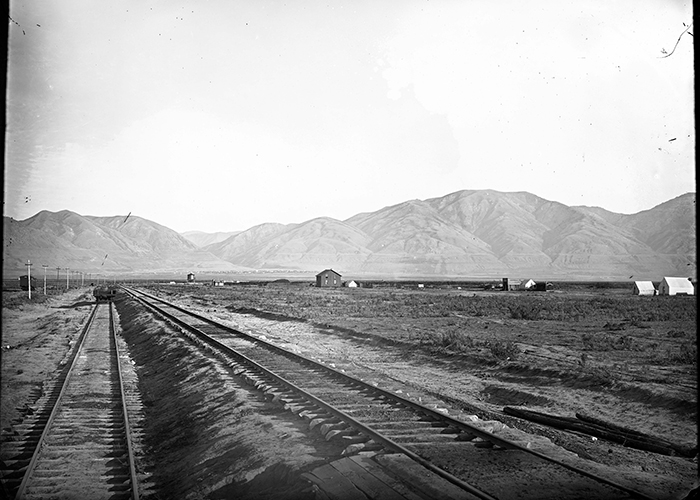
Photograph by Andrew J. Russell showing a portion of a distant Mormon community. Panoramic No 1, 219 Salt Lake Valley from Corinne, Brigham City in the Distance, c. 1869, Union Pacific Railroad, Oakland Museum of California, H69.459.2023.
When the transcontinental railroad was first being discussed in the 1840s and 1850s, a vast railroad network already existed in eastern and parts of the midwestern US; however, the western states—some of which were not even official states yet—lacked reliable overland transportation systems, which had the effect of isolating them from the rest of the US and, most notably, from political control. According to Craghead, the push to develop the transcontinental railroad was primarily motivated by US politicians’ desire to have those in the west be better incorporated into the nation. To encourage a faster build (and to increase the likelihood of successful completion, given that overcoming the landscaping and organizational challenges at this level would be a tremendous feat), the build was awarded in 1862 to two companies that would build toward each other from opposite ends of the track: the Central Pacific, which was based in California (moving eastward), and the Union Pacific, which was based in Nebraska (moving westward).
The demographic makeup of the labor forces was different for each company, and was heavily influenced by the company’s location and connections. The Union Pacific employed primarily Irish immigrants as well as African Americans who had been enslaved prior to the Civil War. The Central Pacific, on the other hand, depended heavily on Chinese nationals, many of whom were brought over by Chinese labor brokers with the intention of working and then returning home upon completion of the project. And though they didn’t typically directly contribute to railroad work, it would be negligent to leave out an acknowledgment of the many Native American peoples who were significantly impacted by the railroad, as laying tracks often followed either a negotiated or a forceful takeover of tribal lands.
Though the railroad represented a variety of things to those actively involved with the project, public messaging and perception have tended to follow a more simplistic narrative, ignoring the reality of those with less financial and political capital. “The past may be the past, but history is the stories we tell about the past. Rather, it’s not what happened, but how we understand what happened, and it’s always open to reinterpretation,” said Craghead.
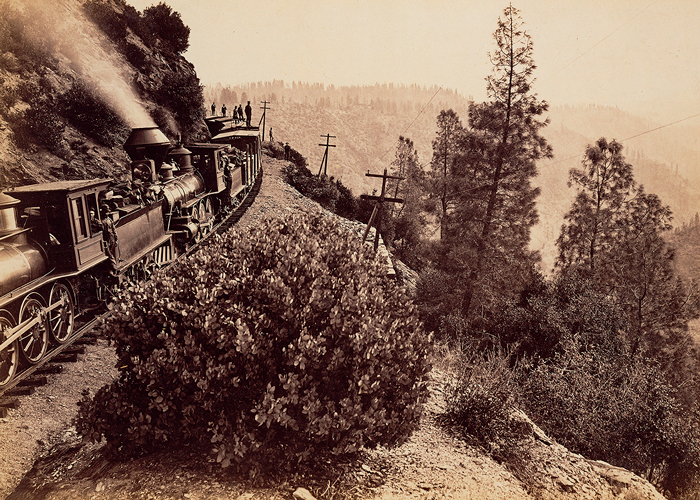
Photograph by Carleton E. Watkins. Cape Horn, C.P.R.R., circa 1878, Central Pacific Railroad, J. Paul Getty Museum, 94.XA.113.23. Accessed digitally from Center for Railroad Photography & Art’s “After Promontory” exhibit site.
According to him, narratives that dominated during that time about the railroad could be grouped into a few dominant categories: that the railroad was part of America’s Manifest Destiny; that the railroad was a “triumph of technology over nature” and that this innovation was “building the future”; and that the railroad was a means of bringing economic prosperity to less populated areas (particularly to fledgling communities that the tracks would run through). The narratives that proliferated were curated primarily by politicians, business executives and investors in expansion, and public intellectuals who wrote newspaper articles and appeared on traveling lecture circuits; and often made no reference to the hard work and contributions of the diverse labor force making the project possible.
A strong example of this void is in the famous photograph taken at the Golden Spike (railroad completion) ceremony (pictured below this paragraph) in 1869 by A.J. Russell, which would become a widely recognized symbol of national pride and accomplishment. The ceremony as told via the photograph became the subject of reenactments at festivals and patriotic fairs throughout the country for decades to come, served as inspiration for Hollywood films (particularly around the 1930s), and even led the government to later declare Promontory Point (where the ceremony took place) a national monument, where the Parks department facilitates regular reenactments to this day. For years, scholars have debated whether a single blurry figure in the foreground of one of these photos shows a man of Chinese descent, with no clear answer; despite the countless and diverse laborers who made this iconic moment of celebration possible, at most one non-White individual is represented.

Photograph by Andrew J. Russell. East and West Shaking Hands at Laying Last Rail, 1869. The two men shaking hands are Union Pacific chief engineer Grenville Dodge on the left and the Central Pacific’s chief engineer Samual Montegue on the right. Source for information is Klein, Union Pacific, page 232.
In recent years, Craghead asserts there has been a fresh emphasis on reframing the narrative to include the perspectives, contributions, and struggles of those workers intimately involved with the project, not only in scholarship but also through artistic mediums. In the case of the Golden Spike photograph, for example, as the 150th anniversary of the ceremony was approaching, civil rights photographer Corky Lee took on a project of “photographic justice” in 2014 that involved restaging the historic event, but this time included the ancestors of real Chinese railroad workers as the subject of the photographs.
In his own work using and analyzing photography, Craghead turns his attention frequently toward those Native peoples who were displaced as a result of the build. “One of the most important considerations for my work is that I don’t want to repeat the false assertion that this was an empty land. To my mind, you can’t talk about the railroad and development of the west in an honest way if you’re not talking about it as an occupied place for thousands of years; often popular narratives have erased people already here. As a scholar, I think we have a duty to reconsider that narrative, to try and better see the human costs of the extension of the railroads,” he said.
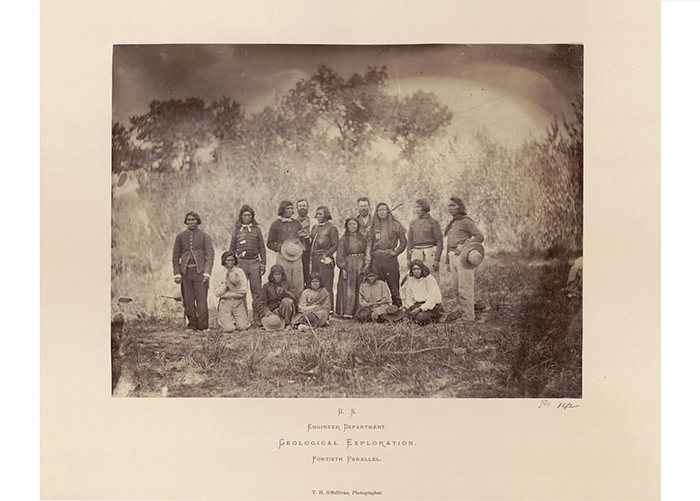
Photograph by Timothy H. O’Sullivan, Lo! [Indians (Paiute?), with two Expedition members], 1840-1882. Contributing Institution: UC Berkeley, Bancroft Library.
Additionally, Craghead hopes to draw attention to the numerous and complex identities of those who took over this land, as well as their understanding of their own role and the significance and value of the railroad in their world. He explained, “It wasn’t just European Americans colonizing a First Nations space; there were multiple peoples involved: Chinese railroad workers who intended to go home and sometimes never did, raising questions of the intersection between “nationality” and “identity”; people who saw themselves as Californians (as distinct from East Coasters); plain Europeans who were involved from a financial perspective and had their own stakes, their own ideas of what the project was supposed to be about; enslaved people who were recently freed; recent immigrants… There was a collision between multiple peoples that led to a far more complicated and nuanced story than many people understand.”
Though reading about these nuances is certainly a fruitful way to gain knowledge of the many ways the railroad impacted various communities, the arts have proven a powerful tool for inspiring deeper understanding. As the campus anticipates Silkroad Ensemble and Giddens’ musical depiction, Craghead encourages us to embrace the ways that art can round out our knowledge in a more human way.

Photograph by Carleton E. Watkins, showing the continued presence of Chinese railroad workers eight years after the railroad’s opening. Trestle on Central Pacific Railroad, 1877, Central Pacific Railroad, now Union Pacific, J. Paul Getty Museum, 94.XA.113.26.
“Sometimes when trying to tell historical stories only in text, we can miss out on the embodied implications of what happened or what it was like, other ways of living with these consequences that aren’t always accessible. For example, what would it feel like to be in the West, where you’ve been disconnected from the rest of the country and then suddenly you are connected? What would it feel like to have opportunities expanded with a new job and new life and a place thousands of miles away from everything you’ve known? What would it be like to have the home you grew up in, where your family and your people have lived for generations, suddenly being claimed by others, and taken against your will?” said Craghead. “There is an emotional resonance to what change is like, and art often gets us closer to that feeling. Humanities sources can give access to a reality that is no longer practical—a reality that doesn’t impact you until you’re reading a diary, seeing what that person wrote themselves, where their tears hit those pages… Getting out into the field, into art, into music, makes these situations and these people real in a way text sometimes cannot.”
Interested in experiencing some of the powerful art that is reshaping the railroad narrative in our modern world? Learn more about Silkroad Ensemble’s and Rhiannon Giddens’ American Railroad tour, their American Railroad performance at Cal Performances, and Dr. Craghead’s research, including multiple photography books and a curated exhibit.
On behalf of Cal Performances, we extend our thanks to Dr. Alexander Craghead for his thoughtful discussion, expertise, and passion, all of which contributed significantly to the writing of this article.
Credit to header image: Photograph by Andrew J. Russell. Trestle work, Promontory Point, Salt Lake Valley, 1870, Union Pacific Railroad, California State Library, 1470591. Accessed digitally from Center for Railroad Photography & Art’s “After Promontory” exhibit site.
Related Posts
There are no related posts yet. Check back soon!
The Making of Ngwenyama’s Flow, Inspired by the Natural World

The Making of Ngwenyama’s Flow, Inspired by the Natural World
“We are part of that same energy, we are the dust from these ancient creative events. And thus we are all tied together.”
By Thomas May, Cal Performances-commissioned writer, critic, educator, and translator
The string quartet, according to composer Nokuthula Ngwenyama, “is considered a ‘perfect’ ensemble. It inspires delicacy, sensitivity and adventure. The core range is smaller than that of the piano, yet its timbre allows for beauteous interplay.” For the first of its two Cal Performances appearances this season, the Takács Quartet presents the world premiere of Ngwenyama’s debut in the genre, which the ensemble commissioned “because of our admiration for her as a virtuosic violist and performer who understands the dramatic and sonorous possibilities of a string quartet.”
Ngwenyama demonstrates this understanding in her new work, Flow, a centerpiece of the Takács Quartet’s current season. Responding to the ensemble’s request to write something inspired by “the natural world,” she locates her new composition in a tradition that recognizes the string quartet as uniquely well-suited to conveying profound reflections on existence and the human condition.
Ngwenyama, who is of Zimbabwean-Japanese parentage, explains that her first and last names (Her full name is Nokuthula Endo Ngwenyama.), respectively, signify “mother of peace” and “lion” in Zulu. A native of Los Angeles who is now based in Phoenix, Ngwenyama studied at the Colburn School, the Curtis Institute, and the Paris Conservatoire. She initially came to international attention as a violist at the age of 16, winning first prize at the fourth edition of the Primrose International Viola Competition in 1993. Her distinguished career as a violist has taken Ngwenyama to audiences around the world—including at the White House.
Parallel to her career as a soloist and chamber musician, Ngwenyama has emerged in recent years as a composer with a growing catalog of works primarily for strings. “I write from the place that I know, which tends to come from the viola,” she says. “I think of it as the heart of the sound and feel very comfortable there.” She became the first-ever composer-in-residence with the Phoenix Chamber Music Society and is now devoting the majority of her creative time to composing—including a second piano quartet for Espressivo! with Anna Polansky, Jaime Laredo, Milena Pájaro-van de Stadt, and Sharon Robinson and a new piece commissioned for the semi-final rounds of the 2024 Primrose International Viola Competition, which will be held in June at the Colburn School in Los Angeles.
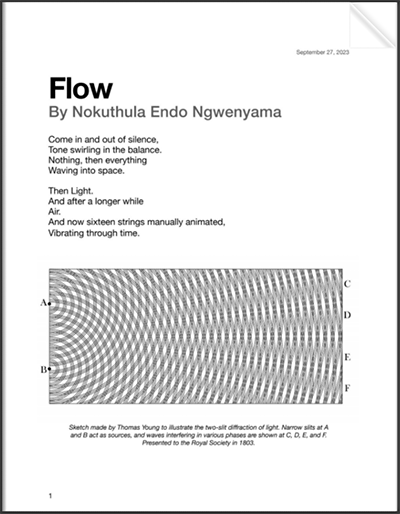
Experience more about the composer’s inspiration for the piece by visiting her interactive flip book, accompanied by video, audio samples, and illustrations, as well as a mind-bogglingly far-ranging 12-page bibliography of sources that inspired her.
While performing at the Marlboro Music Festival, Ngwenyama got to know violinist Harumi Rhodes and welcomed the opportunity to write a piece for the Takács Quartet but also experienced a mix of emotions: “I was surprised, greatly honored, and fearful,” she recalls. The ensemble’s request that she write “about anything in the natural world”—in keeping with lead commissioner Cal Performances’ suggestion—led to more than a year’s worth of research into topics encompassing “the life cycle, carbon reclamation, environmental protection, animal communication, starling murmurations, our last universal common ancestor (LUCA), black hole collisions, and the subatomic realm.”
Along with Ngwenyama’s scientific investigations into such matters as cosmogony and quantum physics, Flow distills her deep study of spiritual traditions: in particular, of yoga and its understanding of the meaning of breath. (The composer also holds a master’s degree in theological studies from Harvard Divinity School.) The concepts of Om—which she defines as “the first source of sound and act of creation”—and Prana (“creative energy”) are central to Flow. Ngwenyama asks the quartet to manifest these concepts and connect with each other through breath control, which in turn is meant to encourage a mindful awareness within the audience.
“We are part of that same energy, we are the dust from these ancient creative events,” Ngwenyama observes. “And thus we are all tied together.” She describes her musical representation of Om as appearing mostly “on an upbeat as a widely vibrated pizzicato glissando in the cello imitating rhythmic placement of the gong in Balinese gamelan. That, in turn, imitates the vibrational birthing energy of our universe.” Flow relies on other extended techniques as well, such as sul ponticello overtones or astonishingly high pitches, to evoke a sense of these moments of cosmic drama.
The a priori template of a four-movement quartet was not part of Ngwenyama’s initial concept. The “Prana moment” of Flow itself—its point of origin— was instead a solo idea for the viola early in what became the finale. She continued by writing music that would culminate in this passage and was surprised to discover that the piece naturally took shape as a multi-movement form, the first three movements serving as a “preamble” leading to this original inspiration. But these in turn developed in new directions. Material from the first movement is thus developed in the finale, for example, “because all matter was put into our universe in an instant.”
Here is an excerpt from the commentary Ngwenyama has provided:
Flow starts like gas seeping from an infinitely full balloon about to pop. Then, as matter inflates space, climactic material is presented almost immediately before abruptly burning out for the universal dark ages. The Prelude examines “B’ing/BE’ing” melodically and harmonically through moments of pranayama (the transformative power of breath) [the notes “B” and “B” in tandem with “E” symbolizing hydrogen and helium, respectively]. It ends with a trailing Om.
The Lento brings further cooling and space in chorale around an octave B-centric pedal. Prelude motifs are given room to develop. The “Quark” Scherzo explores our fundamentally playful selves vibrating here, there—and where? Our sub-atomic realm giddily waltzes up and down while we embrace the ideas of solidity and ego. The opening cello mimics quark motion [i.e., triad combinations of protons and neutrons in an “up” or “down” direction]. The trio, whose only claim to three is triplets in the cello line, provides no break for anyone and instead intones a ballade. The movement ends in virtuosic flurry.
The Finale settles into a stylized recitative where three lower strings solo before coming together to feature a soaring treble voice. Flowing triplets turn into a Classical Indian Dadra Tal (even six beat) rhythm in the bass line while upper strings bow their bouts to simulate Cosmic Microwave Background (CMB) radiation. Upper strings join in via pizzicato glissandi. There is a return to the Prelude opening, then a slingshot into awe-inspiring starling murmurations. Lower strings drive unrelentingly while violin lines chase the other as one mind, instantaneously turning, merging, and transforming beyond individuality. They eventually land, the sky calms through a long D overtone glissando, and a retreating tremolo reveals: Enjoy and go with the Flow, we only know what we know.
Cal Performances looks forward to presenting the world premiere of this epic work, paired in concert with Haydn’s Sunrise quartet and Beethoven’s middle-period E minor quartet from the Op. 59 Razumovsky series, on November 12. Learn more about the Takács Quartet’s performance and get tickets to see the world premiere of Flow.
Related Posts
There are no related posts yet. Check back soon!
10 Fascinating Facts About Kristin Chenoweth You Might Not Know
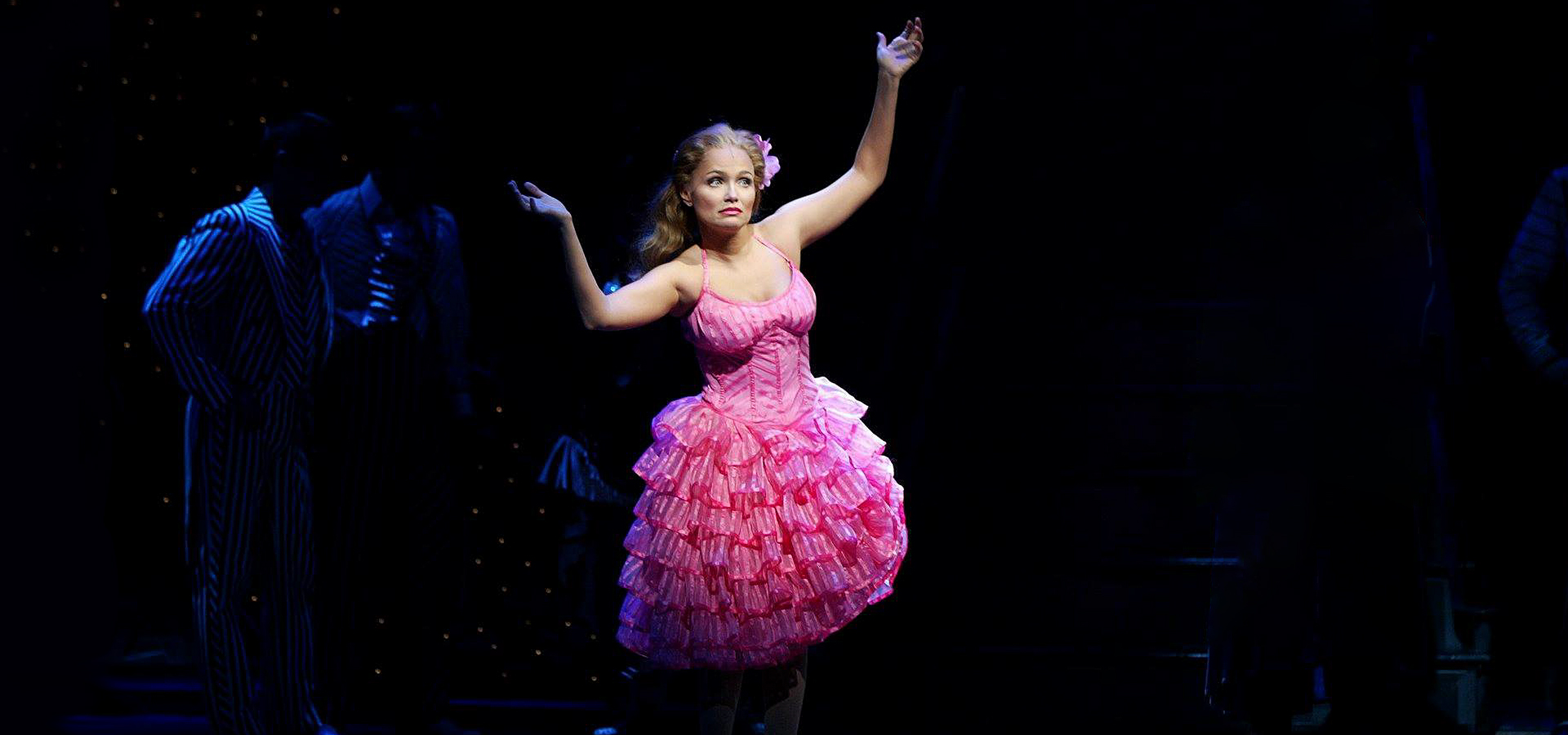
10 Fascinating Facts About Kristin Chenoweth You Might Not Know
Kristin Chenoweth’s Remarkable Career Journey
Kristin Chenoweth, star of stage and screen, comes to Cal Performances for one night only on November 15. In her For the Girls program, Chenoweth gives a vocal performance dedicated to the women friends and idols who musically inspire her. As we eagerly anticipate her Cal Performances debut, we’re sharing 10 things you might not know about Chenoweth that underscore the uniqueness of her artistry and the vastness of her talents and accomplishments.
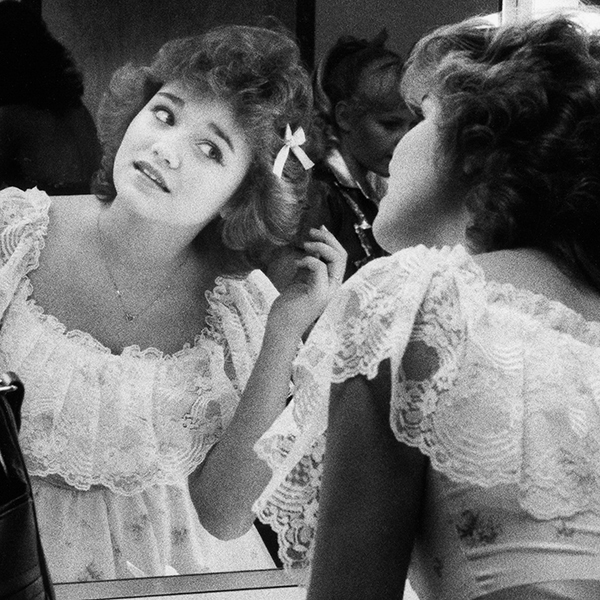
Chenoweth as a young performer in 1984. Photo Courtesy of Oklahoma Publishing Company Photography Collection/Oklahoma Historical Society.
1. She grew up singing in church.
Chenoweth was born in 1968 and was raised in Broken Arrow, Oklahoma. She grew up attending her local church and, as a child, was so determined to sing, she tried out for the adult gospel choir—which promptly earned her a solo! Soon after, she began singing for other nearby gospel choirs, too; she even performed a solo at the Southern Baptist Convention national conference when she was only 12 years old.
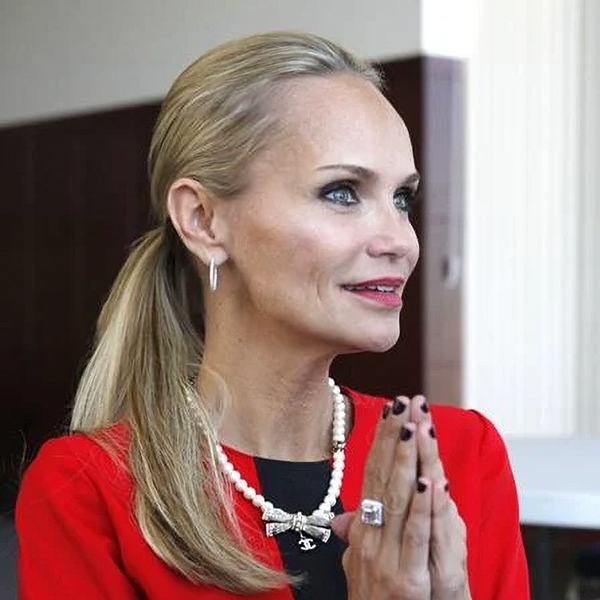
Chenoweth is interviewed before receiving an honorary Ph.D. from Oklahoma City University. Photo courtesy of Paul Hellstern / The Oklahoman
2. She has a master’s degree in opera performance.
Chenoweth earned both a bachelor’s degree in musical theater and a master’s degree in opera performance from Oklahoma City University (OCU). Since her mainstream success, she has continued to support her alma mater by speaking at commencement ceremonies, teaching master classes, and even serving as an artist in residence. After finishing her master’s degree, Chenoweth had the opportunity to go on for more schooling when she won a Metropolitan Opera competition that came with a full scholarship to Philadelphia’s Academy of Vocal Arts. She ended up turning down that opportunity when she landed a job in the Paper Mill Playhouse’s 1993 production of Animal Crackers. (Kristin was awarded an honorary doctorate by OCU a decade later.)

Chenoweth in a look she wore during the 1991 Miss Oklahoma Pageant. Photo courtesy of Kristin Chenoweth.
3. For a few years leading up to her career as a professional performer, she competed (rather successfully) in beauty pageants.
While pursuing her performance degrees, Chenoweth competed in multiple pageants in her home state of Oklahoma, ultimately becoming runner-up to Miss Oklahoma in 1991. Speaking about her experience with the Miss America system, Chenoweth said, “A lot of people can make fun of pageants, but… I ran for Miss OCU [Oklahoma City University] and won, and because of that, I was able to put myself through graduate school.”
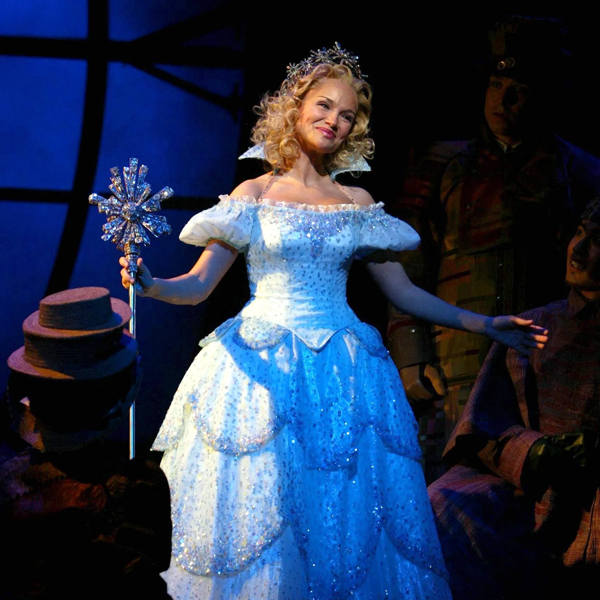
Chenoweth as Glinda in Wicked. Photo courtesy of USA Today.
4. Her role as Glinda in Wicked capped a decade of memorable, award-winning performances.
Following her first role in Animal Crackers in 1993, Chenoweth played Precious McGuire in the Kander and Ebb musical Steel Pier at the Richard Rodgers Theater in 1997, a performance that earned her a Theater World Award, an honor given each year to six up-and-coming actors and actresses. (That year, she happened to share her win with Mark Ruffalo!)
Chenoweth stayed busy in 1999, landing Broadway roles as Sally in the Ambassador Theater’s production of You’re a Good Man, Charlie Brown and as Louisa Goldman in the Helen Hayes Theatre’s performance of Epic Proportions. Wicked made its Broadway premiere in 2003 at the Gershwin Theatre (after a successful pre-Broadway run at San Francisco’s Curran Theatre), and Chenoweth’s iconic performance went on to break box office records and captivate audiences around the world.

Chenoweth in Pushing Daisies. Photo courtesy of ABC/tor.com.
5. She is an experienced television, film, and voice actor, boasting roughly 80 distinct acting credits.
Many will recognize Chenoweth for her television appearances in Pushing Daisies, West Wing, and Glee, and her movie roles in RV, Bewitched, and The Pink Panther. She also has a distinctive speaking voice—one she has personally likened to that of the fictional character Betty Boop—and has been successfully cast as a voice actress in animated projects including Rio, Tinkerbell and the Great Fairy Rescue, BoJack Horseman, and The Peanuts Movie.

Chenoweth accepting her first Tony Award in 1999. Photo courtesy of Kristin Chenoweth.
6. She has won a Tony Award as well as a Primetime Emmy.
In 1999, Chenoweth won a Tony Award for Best Performance by an Actress in a Featured Role in a Musical for her portrayal of Sally in You’re a Good Man, Charlie Brown. In subsequent years, she was nominated for additional Tony Awards for her performances in Wicked (2004) and On the Twentieth Century (2015). She has also been recognized as a television actress, winning a Primetime Emmy in 2009 for Outstanding Supporting Actress in a Comedy Series in Pushing Daisies, and has been nominated for four additional Primetime Emmy Awards. Other accolades include multiple Drama Desk Awards and Outer Critics Circle Awards, a star on the Hollywood Walk of Fame, and the GLAAD Media Vanguard Award. (It’s also worth noting that the Broadway studio recording of Wicked, on which Chenoweth features prominently, won a Grammy in 2004.)

Cover of What Will I Do with My Love Today?. Photo courtesy of Barnes & Noble.
7. She is a four-time author.
Chenoweth wrote her first book, a memoir entitled A Little Bit Wicked, in 2009. The book carried a slogan characteristic of Chenoweth’s standout humor and determination: “Life’s too short. I’m not.” (Chenoweth is 4’11’’.). The book was an instant success, debuting on the New York Times Hardcover Nonfiction Best Seller List. In the past year, she has authored three additional books: What Will I Do with My Love Today?, an illustrated children’s book encouraging “generosity and kindness”; I’m No Philosopher, But I Got Thoughts: Mini-Meditations for Saints, Sinners, and the Rest of Us, a book inspired by her self-reflection early into the COVID-19 pandemic that shares experiences from all throughout her life; and, newly released this year, My Moment: 106 Women on Fighting for Themselves, a book co-created by Chenoweth, actress Kathy Najimy, singer-songwriter Linda Perry, and the married duo of musician and activist Chely Wright and writer and businesswoman Lauren Blitzer. Described as a “natural extension of the #MeToo Movement,” My Moment features contributions from such icons as Gloria Steinem, Lena Waithe, Joanna Gaines, Brandi Carlile, Beanie Feldstein, Cynthia Erivo, and Billie Jean King.

Cover of For the Girls album. Photo courtesy of Kristin Chenoweth.
8. She has released eight studio albums.
Chenoweth’s debut album, Let Yourself Go, was released in 2001 and was inspired by musicals from the 1930s. Subsequent albums have included Christian/spiritual albums (including two Christmas albums), a country-pop album, a jazz album, a recorded PBS concert special, and an album inspired by her female musical icons entitled For the Girls, which serves as the inspiration for her upcoming concert at Cal Performances. (Read more about For the Girls below.)

Chenoweth in her For the Girls mystical-style revue on Broadway. Photo courtesy of Playbill.
9. Her Cal Performances November program For the Girls is related to her seventh studio album by the same name.
In August 2019, Chenoweth released For the Girls as a way to honor her female musical icons and friends. On her inspiration for the album, Chenoweth said, “I wanted to celebrate women who’ve come before me, like Dinah Washington, Eva Cassidy, Judy [Garland] of course, Barbra [Streisand]… And I think nowadays we’re looking at different lanes, musically, being broken because I have a voice that kinda does a lot of different things, and it’s never been celebrated. But with this record I get to have the opportunity to do it all.” The album includes contributions from Ariana Grande, Jennifer Hudson, and Reba McEntire. Later in 2019, Chenoweth went on to promote the For the Girls album on Broadway by performing in a limited-time, eight-performance run of a musical-style revue created around the recording. Cal Performances patrons can expect a similar program for her Berkeley debut!
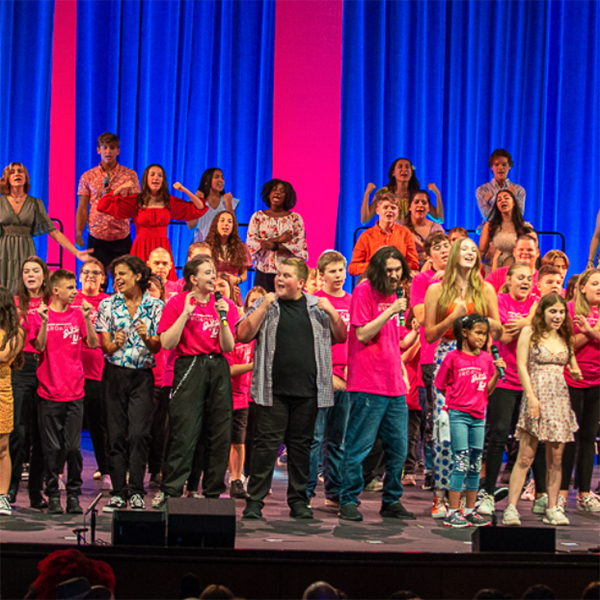
Children performing at Kristin Chenoweth’s Broadway Bootcamp. Photo courtesy of Kristin Chenoweth’s Broadway Bootcamp.
10. She has her own Broadway Bootcamp for children in her hometown.
Nearly a decade ago, Chenoweth formed her very own Broadway Bootcamp in her hometown of Broken Arrow, Oklahoma to train the next generation of entertainers. Kristen Chenoweth’s Broadway Bootcamp is an annual 10-day program that culminates in a final showcase and awards ceremony. Through the program, high school students have the opportunity to interact with award-winning stage actors as they are trained in dancing, singing, and performing. This year’s camp even featured a forum with Chenoweth’s parents about what parents should know to help their children succeed in the business.
We hope you learned something new about this incredible artist and will join us when Kristen Chenoweth makes her Cal Performances debut at Zellerbach Hall on November 15, 2023. Learn more/buy tickets >
Related Posts
There are no related posts yet. Check back soon!
Announcing Illuminations’ New Partnerships and Community Event Series Exploring “Individual & Community”
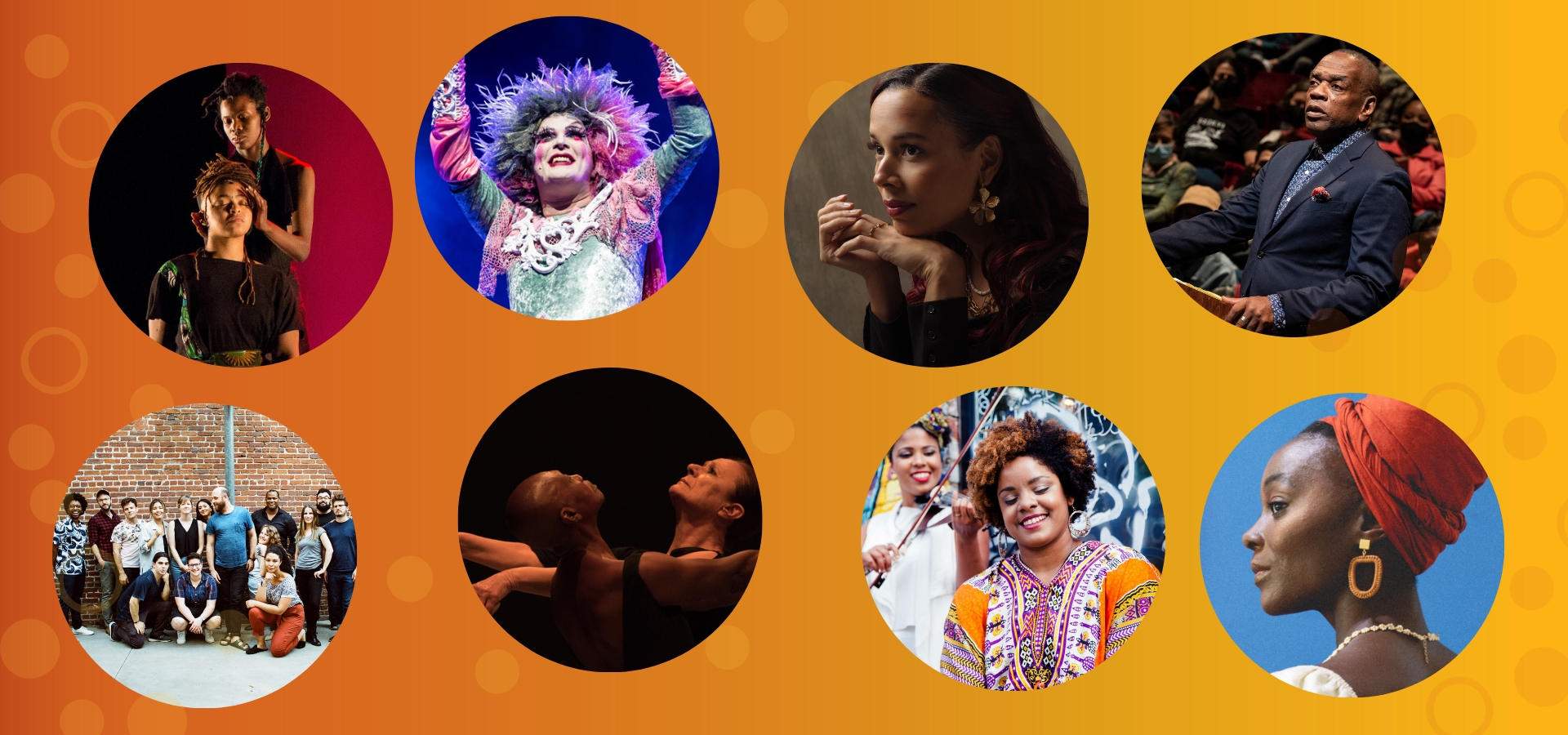
Announcing Illuminations’ New Partnerships and Community Event Series Exploring “Individual & Community”
“…Anything that brings us together in a positive way is very useful in helping us reinterpret not just the ‘other’ community, not just the ‘other’ individual, but also our own community and ourselves.”
By Krista Thomas, Cal Performances’ Associate Director of Communications
In its fourth year, Cal Performances’ Illuminations program is exploring its new theme of “Individual & Community” with an original series of community events, augmented by fresh campus partnerships!
Illuminations launched during Cal Performances’ 2020–21 season as a way to connect groundbreaking UC Berkeley scholarship to pressing themes taken up and explored by the world-class music, dance, and theater presented by Cal Performances. Illuminations programming, which includes performances, panel discussions, lecture demonstrations, Q&As, community conversations, and more, sheds light on pressing topics with the power to transform our understanding of the world and shape the future.
Why “Individual & Community”?
As our society faces increasing polarization and radicalization, this year’s theme of “Individual & Community” will empower us to explore the tensions that come into play while balancing the interests of the individual with the interests of the group.
john a. powell, director of the Othering & Belonging Institute at UC Berkeley, said, “The concept of individuality and community is constantly in flux, although this real emphasis on individuality is relatively recent; if you go back 300 or 400 years, it wasn’t relevant. And so, as the individual emerged… initially in Western society, it was always the question of the relationship between the individual and the community. Neither one of them is static, and that’s one of the mistakes that we make. They’re constantly moving.” powell continues, “And music, dance, art is an…expression of meaning at a deep spiritual level… So anything that brings us together in a positive way is very useful in helping us reinterpret not just the ‘other’ community, not just the ‘other’ individual, but also our own community and ourselves.”
Based on common threads in the performances coming to Cal Performances’ stages and noteworthy scholarship on campus, Cal Performances has opted to focus on three key subtopics related to the concept of “Individual & Community”: intersectionality, individual liberties and community needs, and American Dreams and Culture Wars. In the coming months, videos discussing each of these topics in greater depth will be shared on the Beyond the Stage blog.
Enlightening and Participatory Community Events
Throughout the season, eight distinct performances spanning rock opera to modern dance will each pose new questions and offer a fresh lens through which to analyze the concept of “Individual & Community” in our lives and our world. These performances will be augmented by a schedule of complementary moderated discussions with artists and UC Berkeley faculty to find through lines in art and in research; as well as facilitated post-performance community conversations that will allow those in attendance to put the theme into practice by collaboratively discussing their own response to the performance.
Dates of moderated discussions and community conversations are listed on Cal Performances’ website, on the event details page of each Illuminations performance. While information about discussion participants and moderators from the university is forthcoming, patrons can expect that many guests will be pulled from the “Individual & Community” lead partner institution and advisory council (Read on for more information.).
An Epicenter of Campus Expertise
In addition to the interpretations of artists, Illuminations programming will include the voices of UC Berkeley faculty and staff, with each participant possessing expertise that adds a new layer to the “Individual & Community” conversation. Campus luminaires will participate in Illuminations events and help shape conversations around the theme, providing points of interest and of access for members of the campus and broader Bay Area community.
Lead Partner
During the 2023–24 season, UC Berkeley’s Othering & Belonging Institute (OBI) will serve as Illuminations’ lead partner. “Illuminations brings Cal Performances artists and UC Berkeley scholars into thought-provoking conversations, and we are incredibly fortunate to have a resource such as the Othering & Belonging Institute to help us navigate our season-long inquiry into ‘Individual & Community,'” said Mina Girgis, Cal Performances’ Director of Education, Campus and Community Engagement. “As with Illuminations, OBI works to make academic research available to a non-academic audience. While easily digestible, the institute’s frameworks and research are both profound and revolutionary. They also address many of the questions we’re exploring throughout the season.”
OBI is made up of scholars, organizers, communicators, researchers, artists, and policymakers who focus on “groundbreaking approaches to transforming structural marginalization and inequality.” OBI’s relationship to “belonging” is rooted in structural equality that uplifts the individual as a means of building community. According to OBI, belonging “means having a meaningful voice and the opportunity to participate in the design of political, social, and cultural structures that shape one’s life—the right to both contribute and to make demands upon society and political institutions. At its core, structural belonging holds a radically inclusive vision because it requires mutual power, access, and opportunity among all groups and individuals within a shared container (such as a society, organization, club, etc.).”
OBI’s director, john a. powell, also brings perspective as the Robert D. Haas Chancellor’s Chair in Equity and Inclusion and as a Professor of Law, African American Studies, and Ethnic Studies at UC Berkeley. Members of OBI will participate in Illuminations programming in a number of faculties, most notably in helping to develop a welcoming space for and facilitate dialogue in post-performance community conversations.
Advisory Council
To provide even greater diversity of thought and expertise, the 2023–24 season will also feature an advisory council that brings together scholars from across the UC Berkeley campus to contribute to Illuminations events, especially moderated discussions and classroom visits, and to introduce perspectives designed to better explore the theme. Through Illuminations’ advisory council, Cal Performances will place the performing arts in dialogue with research from eight different UC Berkeley institutions working on new ways of understanding ideas concerning “Individual & Community.” Advisory council members currently include:
- Erwin Chemerinsky, Dean of the UC Berkeley School of Law, whose expertise spans constitutional law and law and society.
- Julianna Deardorff, Associate Dean of Faculty and Academic Affairs for Public Health; Associate Professor in the Division of Community Health Sciences; and head of the Maternal, Child and Adolescent Health (MCAH) program, whose research focuses on early life adversity, pubertal development, and the health and well-being of adolescents, with a specific focus on Latino youth and young adults.
- Patrice Douglass, Assistant Professor in Gender & Women’s Studies, whose research includes Black feminist theory, Afro-pessimism, gender and sexual violence, and political philosophy.
- Jack Glaser, Professor at the Goldman School of Public Policy, whose work in social psychology covers intergroup biases, stereotyping, prejudice, and discrimination.
- Jodi Halpern, Professor of Bioethics and Medical Humanities in Public Health and co-founder and co-lead of the Berkeley Group for the Ethics and Regulation of Innovative Technologies, with her research bringing together psychiatry, philosophy, affective forecasting, and decision science.
- Charles Hirschkind, Professor of Anthropology and Senior Research Scholar for the Center for Middle Eastern Studies, with research interests including religious practice, media technologies, and emergent forms of political community in the Middle East and North America.
- Arlie Russell Hochschild, Professor Emerita of Sociology, whose research covers family, market culture, global patterns of care work, and social psychology, with a recent focus on the relationship between culture, politics, and emotion. (Her latest book focuses on the “American Right,” empathy, and notions of the American Dream.)
- Juana María Rodríguez, Professor of Ethnic Studies and Core faculty in Performance Studies at UC Berkeley, whose expertise spans racialized sexuality and gender, queer of color theory and activism, affect and aesthetics, technology and media arts, law and critical race theory, and Latinx and Caribbean literatures and cultures.
- john a. powell, Director of the Othering & Belonging Institute, Robert D. Haas Chancellor’s Chair in Equity and Inclusion, and Professor of Law, African American Studies, and Ethnic Studies, who is recognized for his expertise in civil rights, civil liberties, structural racism, housing, poverty, and democracy.
How to Participate
The best way to participate in this far-reaching dialogue is to attend Illuminations performances and to join in the pre- or post-performance events designed to provide greater context on the theme. Check the specific event page for each performance to find out which dates will include moderated discussions and community conversations. You are also encouraged to keep an eye on Cal Performances’ Beyond the Stage blog or sign up for the biweekly email newsletter so you can see when new videos and resources on the topic are uploaded.
“This theme of ‘Individual & Community’ is special in that it at once connotes a universal, grand context for our societies at large, and at the same time inspires an intimate understanding of our own role within this broader context. Therefore, an exploration of ‘Individual & Community’ can only be fruitful if we have active participation from individuals who are open to engaging their authentic selves, who bring fresh ideas, and who are willing to reevaluate and challenge those ideas along the way,” said Jeremy Geffen, Cal Performances’ executive and artistic director. “We hope to work with many members of our own Bay Area, UC Berkeley, artistic, and Cal Performances communities to build something profound this season.”
Related Posts
There are no related posts yet. Check back soon!


